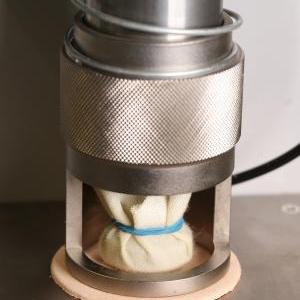Test Method: SATRA TM14
Resistance to scuffing by mild circular abrasion
December 2024

SCOPE
This method is intended to assess the degree of damage to a material during mild wet abrasion. It is specifically used to imitate the scuffing action of a damp hose on uncovered footwear insoles during wear. The method is mainly applicable to fibreboard insole materials, but can be used to assess any sheet material, other than nonwovens.
PRINCIPLE
Specimens of the material are rubbed by a rotating wet circular wool felt pad, covered with a worsted repp fabric, under a constant contact force. The specimens are rubbed until the first sign of surface damage is evident and the number of revolutions to cause this first damage is recorded. The test is continued for a predetermined number of revolutions. The overall damage to the specimens is assessed by measuring their mass loss due to rubbing. This is achieved by comparing the change in mass of the rubbed specimens with the change in mass of a second set of specimens which are subjected to identical conditions but without the rubbing. Finally, the mass loss is divided by the density of the specimen to convert it to a volume loss.
REFERENCES
BS 4060: 1989 - Specification for pressed wool felts - Appendix E1.
BS ENISO 2286-3:1998 - Rubber or plastic coated fabrics - Determination of thickness.
BS ENISO 2589:Leather physical testing - Measurement of thickness.
Test Method SATRA TM31 – Martindale abrasion resistance.
HISTORY
First issued December 1966. Revised August 1970, May 1992, November 2004, December 2021, December 2024.
AVAILABILITY
This test method is available to members and non-members.
PRICE (ex. VAT)
This price is for a printed copy of the Test Method.
- Members: £80
- Non-members: £230


 EN
EN ZH
ZH